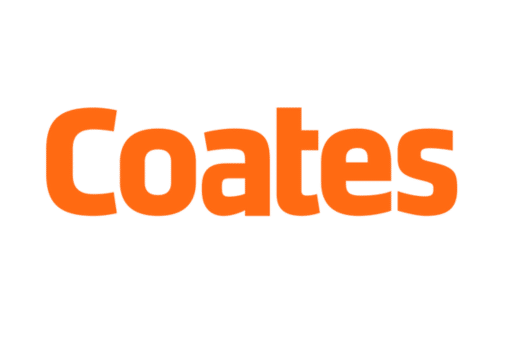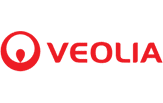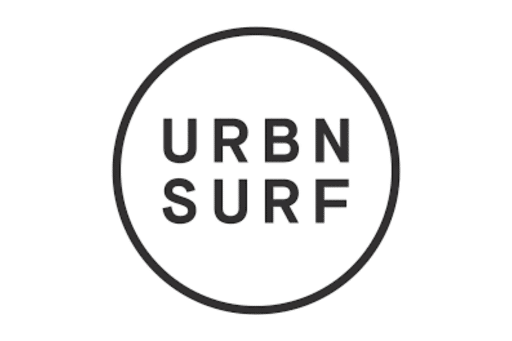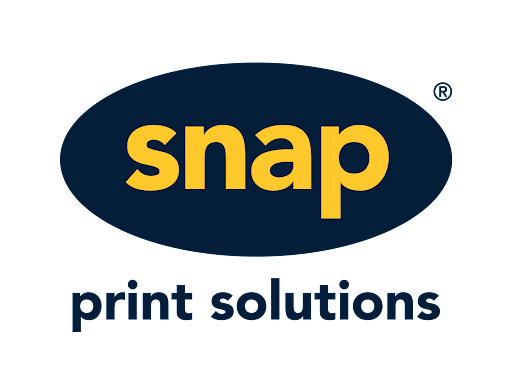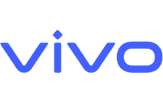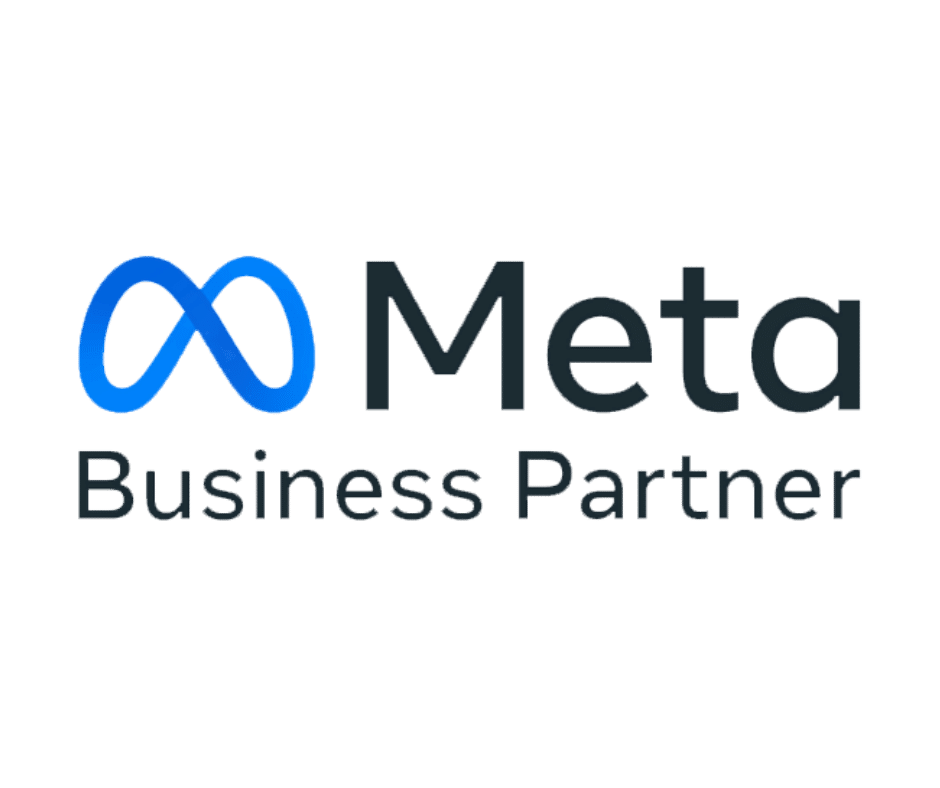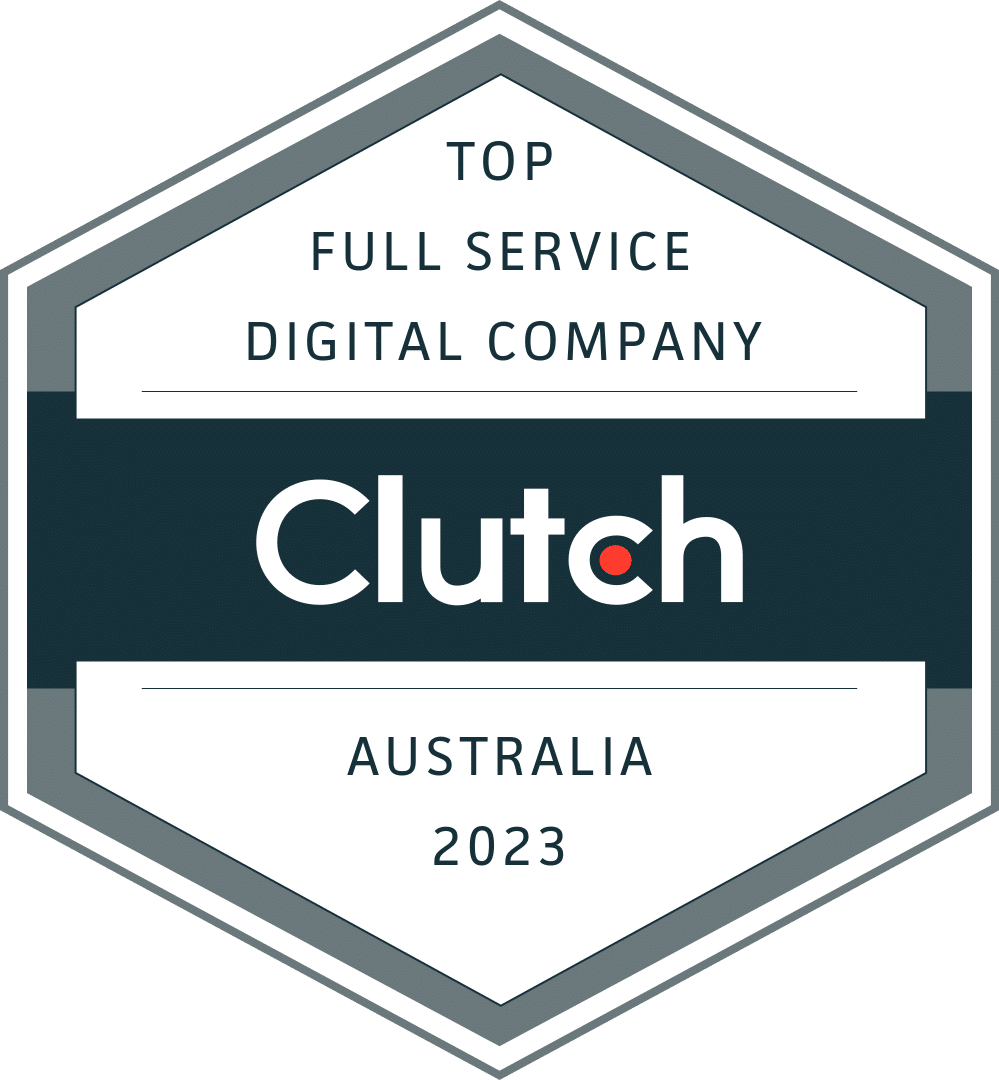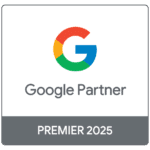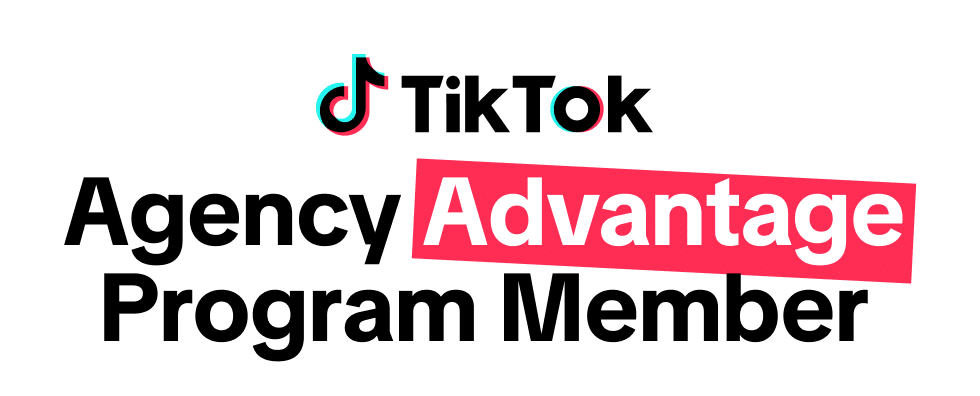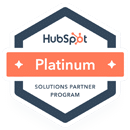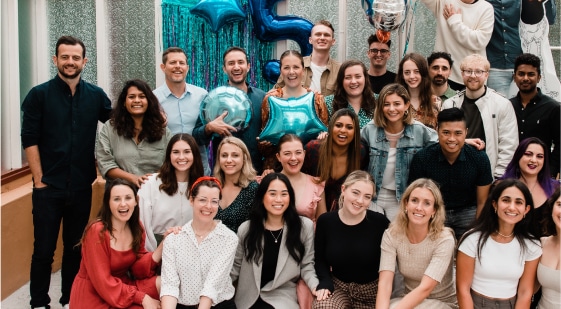Rethinking Search: Google vs ChatGPT, Attribution, Audiences and the Future
Episode Description:
Key Takeaways:
- Zero-click searches and AI Search tools - Where is traffic going?
- The AI hype cycle - Why most marketers are chasing the wrong trends
- SEO and digital PR strategies - When and why it's vital to invest in PR
- The hidden challenges of AI data sources and what they mean for marketers
- How to find and engage your ideal customers through audience research
- The evolution of social media - How platforms like Facebook, LinkedIn and TikTok are shifting
- Privacy, data collection and attribution - Why traditional tracking models are failing
- Brand awareness vs paid advertising - How to strike the right balance
Featuring:
About the Guest:
Rand Fishkin is the Co-Founder and CEO of SparkToro, a leading audience research software company helping brands discover where their target customers engage online. Prior to founding SparkToro, Rand was the co-founder of Moz, where he built one of the most influential SEO communities in the world.
He’s also the author of Lost and Founder, a candid look at the startup world and a frequent speaker at global marketing conferences.
You can follow Rand on LinkedIn.
Transcript
James Lawrence: Welcome back to the Smarter Marketer podcast. I'm here today with Rand Fishkin. Rand, welcome back to the pod.
Rand Fishkin: Yeah, thanks for having me, James. Good to be here.
James Lawrence: Very, very excited to have you back. You're, um, we had an episode, I think, in 2023, and it was one of the most listened to episodes that we've had so far on the podcast, so back by popular demand, but I will reintroduce you for those that didn't get a chance to listen to the first one, so Rand is the co founder and CEO of SparkToro, makers of audience research software.
Prior to SparkToro way back in 2004, Rand created the SEO Moz blog, which morphed into Moz and became the world's most popular community and content resource for search marketers. Over seven years, you grew that business, Rand, to over 130 employees, 30 million in revenue, traffic of around 30 million plus visitors a year.
You've been a. A bedrock in our industry over the last 20 years and, , you've been on a blitz recently with awesome content that you share, both on the SparkToro website by EDM on your own LinkedIn page where I wanted to start the conversation. Um, what are you seeing with the data that you're viewing in terms of zero click searches within the Google ecosystem, um, chat GPT tremendous tool growing rapidly, but still nowhere near the kind of, um, uptake the Google has in the penetration that Google has, but kind of similar in the sense right of zero click search, keeping a lot of traffic in that ecosystem.
Um, what are the numbers?
Rand Fishkin: I think the thing that's interesting, I don't know, James, if you looked at, um, there were two companies recently that did research about this, where they basically looked at millions of chat GPT prompts and conversations. And then tried to classify them into, Hey, what are, what are people doing with this?
Well, one of them was, uh, SEM rush the other one. , it's like an AI search company. And, uh, both of these reports basically found that 70 to 75 percent of activity on not just chat GPT, , but AI tools in general, there's no comparable thing that you could do in Google.
, for example, I released some data last year that if you were to assume that every single chat GPT prompt was equivalent to a Google search, chat GPT would have 5 percent search market share, which is slightly more than being that sounds pretty incredible, except obviously, as we all know, most chat GPT prompts are not equivalent to Hey, I want this thing.
Can you tell me about this thing? Or I want information about it. I want to go to their website. You know, I want to transact. That's not what chat GPT or any of these AI tools are doing 75 percent of the time. , I would instead say, Oh wait, gosh, I don't pay any attention to DuckDuckGo and they have 1%.
So should I be paying a lot of attention to ChadGBT who also has 1%? You know, I'm not saying throw out your AI investment strategy. I actually, you know, SparkToro obviously helps people. Potentially get into AI tools and whatever. So, uh, uh, I'm not arguing against it. I , just worry that , we're in a hype cycle.
James Lawrence: Yeah. And I think, I guess at the moment, our clients of ours that would be generating the most traffic from JATJBT is still generating two to 3 percent of the traffic from that platform as they are from Google. I think it's the growth. I think it's kind of doubled, right, in the last 12 months, and that is something which, you know, we do need to keep an eye on, , as to how that growth continues.
Rand Fishkin: , yeah, maybe. Let's say that today you think that traffic or no traffic. Um, Google is influencing, you know, a hundred of your potential customers and ChachiBT is influencing, right? That's a generous, , assumption depending on your field. There could be a field where it's five. There's almost certainly not a field where it's 10.
Not yet anyway. Yeah. And so you could say, boy, if their rate of growth manages to increase instead of decrease, which it did not grow as much in 2023 as in 2022. It didn't grow as much in 2024 as in 23. It's almost certainly not going to grow as much in 2025 as it did in 24. So you would have to make some real assumptions about the growth rate doubling, even though chat, GPT usage is technically slowing down from a growth rate perspective, but let's say you did, let's say you were like, you know what, I think it's going to double well in three, three or four years time.
It will be sending you similar. , influence to what, , being inducted, go and Yahoo send today about about 10 percent of the search market share. And like I said, you know, people don't pay any attention to those engines. They don't do anything to try and get in them. They're, , barely spending, , paid search budget on those places.
I think you can see why I'm worried that this is a little bit of hype cycle stuff that's happening right now. I, I get it. , For example, I was at dinner with my brother a couple of nights ago.
My brother Evan is one of three partners at a mid sized search agency here in Seattle. And I was like, hey, are people asking you? about, you know, getting into AI tools. And my brother rolls his eyes. He goes, every single client clients for whom it makes absolutely no sense at all. He was like, you know, um, folks that, , are in local small businesses like pet sitting.
No, nobody's asking chat GPT. Hey, where's my local pet center. , he had some frustration around that. I was talking to my friend, Will Reynolds, who I was visiting out in, um, Philadelphia. And Will was saying, well, look, , it might not be the case that all the, , all the traffic is there or , that the influence is there yet, but our clients are asking for it.
So we're going whole hog into it. That's what we create content on. That's where we're sort of positioning, repositioning a lot of our marketing because clients are bonkers for it. So, maybe the hype cycle is also how you sell. And so in agency and consulting world, that's what you got to do to , keep bread on the table.
But. If I were advising those clients, I'd say, hey, let's go look up your audience and see what percent of them really use these tools to do this work. Because I suspect that a lot of people are missing out on platforms that have a lot of influence. Reddit, Pinterest, TikTok, LinkedIn, YouTube. And if you're not investing in those places, but you're really worried about chat GPT, it's just not logical.
James Lawrence: Yeah, I think , for us, we've always wanted our clients to be where their clients are, right? Where their potential customers are swimming. Yeah, I mean,
Rand Fishkin: they want business, right?
James Lawrence: Yeah, and I think the thing Which is true, which hasn't been mentioned, is there's also a lot of overlap where a lot of good SEO has always been built on genuinely high quality content, genuinely authoritative content appearing in awesome places relevant to where your customers swim.
And there is a, what we're finding for our clients is that the clients who have done. Good quality, let's call it , genuine digital PR work also get rewarded, right? When you're working with chat GBT and you're working with generative AI, if you tried an approach, which is to manipulate Google and that might have gained the system, it's kind of not the approach that works with.
No, because I
Rand Fishkin: mean, , large language models , don't give a crap about link building. . And , they don't really care what people type into Google. Right. So , those forms or what they click on in Google, which those are all things, . That Google uses, but that large language models don't, you know, James, you gave me an idea here, which , I think maybe is worthy of a video or a blog post, which , if your clients are obsessed with getting into AI tools, maybe you use that as sort of leverage to do things that are good for their marketing anyway.
Even if the AI tools are not going to send them any value or influence or traffic or very minimal amounts, because to your point, you're absolutely right. The way that you get into a large language models is you say, Okay, well, what is a language model using as its, corpus of documents to index and then essentially , they predict words that come after other words frequently in those documents.
And so your job as a marketer, if you wanted to influence that would be to get into the documents that the large language model considers trusted and trustworthy many, many times, right? So that your brand is almost always mentioned or very frequently mentioned alongside. You know, if it was Spark Toro, it would be audience research, right?
We want to be associated with audience research. So lots of places where people do, you know, talk about audience research. We want to make sure Spark Toro is also in that document. That would be something that would not just be helpful for large language model optimization and getting into AI. It's also flippin great for PR.
If you are making sure that the publications and email newsletters and subreddits and, , the LinkedIn posts Podcasts and youtube channels all the places where your subject matter is being discussed. You are also there Who cares if you did it for a dumb reason? Or for a smart reason, right? You're doing it.
James Lawrence: Yeah. And , we've got a client that's in a niche insurance space in Australia and we've done a legitimately good job over the years to build up their profile industry, \ all the kind of classic digital PR stuff.
And they do completely dominate. Search, book, chat, your BT responses around that space in this country, because obviously they're pulling their information from similar places, right?
Rand Fishkin: Right, right, right. . And I think one of the challenges that I've seen people have is that, you know, the language models are not particularly clear on where they derive their data and they try and keep it secret.
You might remember back in like 2021, you know, open. AI said they'd be very open. That's incredible. The reason they have the name is because they promised they'd be open about how they were building the language model, all that kind of stuff. And then they realized, whoa, wait a minute, we have competition and other people are doing this and we want money.
So let's stop doing that. , and they no longer say where they get their data. Same with Anthropic and Perplexity and Gemini, of course, and whatever Meta is doing. , So I think arguably, , you could say, a reasonable reason that this is a challenging prospect is because we don't know for certain where these things are taking place, but it is almost certainly the case that anything that has influence with an audience is going to be somewhere that.
If they can't get it now, the AI tools will try to get it later. And similarly, , they're gonna be wanting to pull back on places where people don't actually pay attention. So if you're thinking , oh, you know what, I'll just spin up 10, 000 websites, you know, like it's 2005 again, uh. It didn't matter at the time whether those sites were popular or important. As long as you get Google to crawl them, get a few links to them. It would be sort of influential to have all of those places link to your website, especially at the time back in the day with anchor text, right?
The words and phrases that you wanted to rank for in Google search. And now the version of that is essentially. To your point, it's digital PR. If you can get a publication, a podcast, a YouTube channel, a webinar, I don't care what it is, something that is going to be consumed by real people. And hopefully many of them in your particular field or around your topic.
You, you can be fairly certain that a high percentage of those will be part of what the large language model uses. , well, Google alerts itself is terrible, but some of the Google alerts competitors out there, like a buzz sumo or a mention or some of those.
I'd actually be great for this because you can see where all the mentions of those words are, what, what the, um, you know, publications that are publishing on those topics. And you can be like, Hey, Oh, shoot. This publication is publishing on that topic. We're not in there. Let's pitch them a piece. And you know what, James, are you finding that those types of pitches that don't say, Hey, we need a link. Will you point to us with anchor text, blah, blah, blah. Those pitches that are just. Can we contribute, are accepted at a far higher rate than the old kind of link building pitches?
James Lawrence: Yeah, I think so.
I think for us, like, you know, I think the tipping point for us would have been three or four years ago where, you know, we've both been in this industry for a long time and forevermore, it was Google was kind of saying, just give, just create great content, make it natural, and you will be rewarded. And I think SEOs forever and a day were like, yeah, , we've got other ideas on that.
But I think it did get to a tipping point where actually doing those things. I think it's good for the industry, good for your customers, good for their customers, and that ethos, I think, puts our clients in a good standing moving forward, , like, Bing is not as big in Australia as it is in the States, so most clients, most businesses wouldn't really optimize for it, but if you do good work within Google, generally rewarded within Bing, like our head of SEO did some analysis, it's a bit old now, it's probably four months old, but, The correlation between ranking on the first page of Google for a term and actually ranking then if you went into chat, JVT and that kind of queried it in a similar way, there was like up to a 92 percent correlation in certain industries.
Yeah, and it is all around great quality content getting referenced in industry, um, industry news, high quality news sites. Um, I think there's always been that question around brand mentions, right? The brand mentions carry any weight. I think they probably do. Um, they definitely do in. Generative AI. So , it's sad to say ran that just doing really good quality marketing might just pay off.
Rand Fishkin: So weird world is this that I'm living in? Take me back to the spam days. So I heard you mentioned a couple of times and anytime people talk about kind of how to, you know, appear in AI. I hear people mention high quality content, but
I've never seen anything that to suggest that high quality content is important that there's even sort of a content quality barrier that they use. They do use. , inferred, , data about the popularity of content or whether the content is, is real or whether it's spam or, you know, manipulative, that kind of thing.
But, if you, , were someone who simply wanted to associate your words with things and publications were willing to sort of accept your pitches. Your stuff could be mediocre. And if you were in more places than your competitor who pitched fewer places, wasn't as present, but had much higher quality content, you would crush them.
Am I right about that? Yeah.
James Lawrence: It's not like we have the odd page rank measure where you just objectively knew this site's a 10, this site's a nine, this site's an eight. So for us, we don't, I guess probably similar to you, right? We don't have anything more than this kind of broad concept that being on.
Sites that likely are a high quality that inferred authority getting, , social likes, et cetera, engagement likely would be, there'd be a way you'd like to think that the algorithms. Paying attention to that, but I take your point, right? I think it's heavily, , based on language, and , it's , not keyword driven, but , as we both know that, , large language models are simply trying to output what is likely to be the next word in a given string, right?
Yeah,
Rand Fishkin: I saw the, I don't know if you guys saw this lawsuit in Australia, you know, um, meta is being sued. By the government, , and, , by one of the big book publishers here, because , they found documentation in metas. This is, you know, inside Facebook's, um, sort of private chats or emails between the team, where , there were some engineers who said, Hey, should we, should we be indexing these, conversations, but also books.
So they basically, you know, got a huge Library of books that were published by I don't know penguin random house or his shed or whoever it was and then they Use that for their large language model building and then when the publisher of course found out about this because the chat logs got leaked They sued facebook for illegally training on copyright material and not giving them, you know, any money for it, etc, etc
and so yeah, I mean, I wonder if books are a thing that Those folks are turning to you, then your job is almost get in the culture, right? , the. Thing you have to do, , imagine if they're indexing, for example, Google for Gemini supposedly uses YouTube transcripts, right. As a huge part of what they index.
Um, , how do you get talked about in a lot of YouTube videos? How do you get mentioned in a bunch of Tik TOKs? How do you make sure that, you know, people are talking about you when they post on Reddit? You got to get in the culture. And that I think is a. Very different way of applying a skill set that many digital marketers already have and have had to use for years, but use it in a different way.
James Lawrence: Yeah, I think it's that intersection, isn't it, of digital, but with PR and storytelling and creating great content, and I think one of your recent videos was around, I don't want to put words in your mouth, but the videos that you create, you're kind of now five minute whiteboard to go onto the SparkToro website, but then looking at the uptake of those videos on the actual website versus when you then put them on LinkedIn and Reddit and wherever else, and it is this, um, and to me that's so, yeah.
It's kind of symptomatic of where we're at around this fragmentation of digital, right? It is depending on, you know, the generation of the cohort you're trying to target. It's TikTok, it's YouTube, it's LinkedIn, it's Reddit, it's Google, it's being a stretch of it. It is this kind of landscape that is not this homogenous Google plus Facebook, , world anymore.
Rand Fishkin: Yeah. And , this is what , my colleague Amanda Natividad coined as zero click marketing, right? Which she basically. said, Hey, look, if, if these platforms, I had done a bunch of research on this and she was like, well, if these platforms are sending less and less traffic and traffic can fall, but revenue still goes up, then what's really happening is that the consumption is taking place on the platforms and the people who are having success are influencing people in the places.
They already pay attention without caring if they get a click without caring about traffic. And then as a result of that, They are benefiting from more sales, increased conversion rates. And so, you know, their traffic could fall by half and their sales could grow by two X because the people who are visiting aren't visiting for the content consumption anymore.
They're doing that in other places. So , why do we have to make our websites? The primary or the only repository of where we put content. If we want to spread our message, let's spread it in these zero click platforms. Let's go to Facebook um, podcasts and webinars and, a million other places where people spend time and pay attention.
, to resonates. I think that's the future of digital marketing. I don't know how long it's going to take. But I think that over the next few years, you know, you asked me what the next five years are gonna look like. The one thing I do predict is over the next few years, people are going to look at their traffic falling and their revenue, hopefully staying the same or going up and go, was traffic always a vanity metric?
Why did I care so much if my marketers got me traffic? I think my job was to influence people
James Lawrence: and I think it probably, I don't think it was a vanity metric back in the day when the ecosystem was different. You know, I think like search marketing back in the day it was, you know, 10 years ago there was a lot of 100 clicks to your website, five conversions does the value from the conversions outweigh the investment.
Keep doing it. , but it's just different now. I don't know. Probably segues nicely into,
the flipping of search versus audience and, um, starting audience first. And it's kind of where we've been. Probably for the last five or six years at Rocket is very much start with, , the audience, right? It's much more old school marketing and, what's the content, what's the messaging, but just, I guess, for those listening that aren't familiar with SparkToro, could we just talk about what it is?
And I think, I guess the philosophy behind it would be awesome.
Rand Fishkin: Yeah. So originally when we first started SparkToro, it was based on Twitter data. , Twitter was sort of our primary connector network, and we indexed profiles there and looked at things that they did and then kind of extrapolated out to the rest of the web and said, well, if gardeners and landscapers on Twitter follow these accounts, then those are probably the most influential, relatively speaking, all around the web.
And of course, , I don't know if you've heard there's like this. Asshole from South Africa who is trying to ruin the world. Um, anyway, one of the, one of the things he ruined a few years ago was Twitter. So, um, I think, what was this, 2023, like end of 22 he buys it, early 23, , we look at our data a few months after Elon's bought Twitter.
And those gardeners and landscapers, they are not talking about gardening and landscaping on Twitter anymore. Obviously, activity went down, right? It's dropped. Yeah, , maybe 30 to 50%, depending on your niche now, except for crypto where it's gone up. , but . The conversation has basically become all cultural, social, and political issues with a little bit of sports in there, too.
And as a result, you can't get decent, interesting data from Twitter about what people are doing on the web. , they just don't use Twitter the way they once did. And so , we rebuilt SparkToro with exactly what you're talking about in mind. So that the concept of audience research is , where is my audience located on the web?
What are the sources of influence that reach them and which ones are most prominent to them? so what are the most popular podcasts with interior designers in California or what are the YouTube channels that science fiction authors subscribe to or which AI tools are more or less popular than average with , b2b SAS consultants But and SparkToro can tell you all of those things , it now uses a combination of clickstream data.
So clickstream the primary thing that we use, which is , a panel of many millions of users around the world and all the URLs that they visit in their browsers. And , we buy that from DAOs, by the way. , which also powers, SEM Rush, SEM. Rush kind of bought a big stake in them, uh, last year.
And, um, we also use Google search data that we get from Market Muse. So. All these websites, what do they rank for, what keywords, et cetera, et cetera, and then linked in profile data. So our new social source of data is primarily linked in. We look at the, um, profiles there, what they contain and then what those people engage with and follow that kind of thing.
Mash up all of those with some fancy mathematics that even I mostly don't have to worry about, but Casey does a great job with. And, uh. And then you can see all of this data about people and SparkToro is super simple, right? So , you don't have to pay anything.
You can just sign up for a free account and then you can run some searches and see some sample searches and be like, aha, I see what they do. And then decide if that's useful to you.
James Lawrence: Yeah, 100%. I think So many of our clients struggle with, like our clients are 95 percent marketers, right?
And you're dealing them with non marketers in your organization, with everyone's got an idea of marketing, right? And I think it is so challenging for marketers to often navigate the politics within an organization and to actually understand, to be able to sell in the value of why we're doing a certain thing.
Um, and yeah, we had some data being shared in the office recently, um, which there goes tick tock plus. Instagram for Gen Zed is a bigger place to start the research phase before buying online than Google is now, right? Very, very different to if you're targeting boomers, right? Where Google still is that place where most of those purchasing decisions start.
And I think it is so important to have. Data to back up your decisions around why we're playing in a certain territory online, right?
Rand Fishkin: Yeah Should it be
James Lawrence: chachapiti? Should it be google? Should it be facebook? Should it be instagram? We've all got opinions right as to which channel we like but it's what's the product we're trying to sell and Where are those conversations being had?
Rand Fishkin: Yeah, I think it's quite interesting. , I remember this same research years and years ago where this is like 2009 I want to say and it was talking about how at the time the younger generation was the end of millennials, right? And, um, and that group supposedly was more influenced by Facebook than they were by Google.
I don't know if I 100 percent believe that. But then, , a few years later there was Research to your point around Instagram in certain sectors for certain consumer goods, especially, visually compelling consumer goods. So, uh,
James Lawrence: fashion and
Rand Fishkin: yeah, fashion in particular was a big one. , women's fashion more than men , but then if you watch the cohorts over time, , it looks a lot like as people get older, , they like migrate back to the platforms that older people, I, I, I can't quite explain it right, but like Facebook is no longer influential with people who were, you know, 25 in 2009, like it's not, not in the same way anyway.
Instagram is no longer as relevant to people in their mid thirties and forties. as it was when they were in their, you know, teens and twenties. So I think , what it pays to do in my opinion is not separate by , arbitrary birth year cutoff, like, Oh, you were born in 1981.
You must be nothing like anyone who was born in 1980. What? And instead to go industry by industry field by field, even website by website. If you can look at and click stream data, for example, like, Hey, people who visit this website, what other websites and YouTube channels and whatever, are they likely to visit more so than, you know, other people on the internet?
If you can answer that, about your competitors, customers or about your own customers. And you can do some cool analysis
James Lawrence: and it's contextual as well. Right? Which is how we act in a, , in a B2B as a consumer in a B2B context , might be different as to how we behave as a, you know, and action
Rand Fishkin: and travel might be very different to how people You know, buy books or choose apartment buildings or select a pet sitter or, the millions of things that you might do in your life.
I don't know how helpful TikTok is for choosing a pet sitter. I suspect not very much.
James Lawrence: Interesting, isn't it? , once your mom and dad are on Facebook, , it's time to flee the platform, which the same thing will happen with TikTok.
Rand Fishkin: I heard the weirdest thing. I want to confirm this with data because we, um, but I have heard that In a weird turnaround Facebook marketplace and the Facebook, , groups, especially the groups around buy nothing , and like swaps and that kind of stuff have become weirdly super popular with.
a cohort of very young consumers. And so maybe, you know, you fast forward 10 years and you're like, wow, they're all buying on Facebook again.
James Lawrence: But , I think your point around this arbitrary line between being a millennial and being, you know, gen Z or whatever it is, and being born in 81 or 80, you need to look at cohorts and clusters and it's nothing.
And I think things used to be generally true, Facebook was social, Google was search, and there was not much in between. But now it is different, just as, you know, things have been for a hundred years. People hang out in different neighborhoods, and like you talk about Twitter, it's, never had the cut through in Australia that it has always had in North America.
It's not like, it's not like no one uses it, but it's far more niche here than it is in North America, even before. I think maybe New Zealand is slightly more, but we've We've always had the highest penetration of Google in the world. I think it's like 90 96 or 95 95 percent of searches in the country of Google where being in North America is always , 5 percent depending on where you're getting your data from.
But so it's, yeah, it's It's really interesting, isn't it? What about other?
Rand Fishkin: What about other platforms in Australia? Do you guys do a lot of Reddit or YouTube or LinkedIn?
James Lawrence: Yeah, YouTube's huge. LinkedIn, I think, would be comparable to North America in terms of, I think, in Australia, LinkedIn publishes its data differently than the other platforms, but there's 25 million Australians.
And I think There's 8 million LinkedIn accounts which get access monthly. So , it's got big cut through in a B2B context. That would
Rand Fishkin: be like 120 million , North Americans or something. Yeah,
James Lawrence: it's, it's, it's a big platform here. YouTube would be comparable to what it is in, in the States.
Bing has always been really small. , we also get probably less high quality data coming out just in terms of Platform adoption and those types of things.
Rand Fishkin: It's really frustrating. So James Sparktoro has clickstream data for Australia and New Zealand, but in order for us to, , fully adopt it, we basically have to buy LinkedIn data and search keyword and ranking data and stuff and have ongoing contracts that update monthly, all that update the data to keep it updated.
And so we sort of are in this stuck place where we're like, well, if we can grow more, then we can get to Australia. Then we can get to New Zealand, but each country we have to go step by step by step right now. So ,
James Lawrence: we need listeners to the pod to email you around saying, if you can get that data coming through, we'll pay for it.
,
Rand Fishkin: , yeah, , it's one of those really frustrating things. I did find this quite surprising. Maybe your listeners actually will think this is interesting. There's this, . Rule of thumb or like golden rule of startups and building products that you should always listen to your customers, especially the people who write into support and say that they want something, you know, for every 10 people who are telling you, Hey, I want this thing.
There's a hundred or even a thousand more out there , who never bothered to write in, but also want that thing. So last year, , we had relaunched the new version of SparkToro. It was us only for the first few months. For the first six months we got, oh my God, probably no fewer than three or four emails a week from each of the United Kingdom and Canada, and we still get plenty from Australia, um, asking us, hey, , will you support our region?
And for UK and Canada, we were like, we're working on it. We're working on it. , we released it in, I think, November. , and the good news. No one writes in anymore asking if we'll support UK or Canada. You know what the bad news is?
James Lawrence: They
Rand Fishkin: haven't necessarily
James Lawrence: adopted the product as you might have thought.
Rand Fishkin: Apparently all those people who are emailing us, , they didn't really want SparkToro or , they only thought they wanted it. I'm not sure. I think , if I put on my You know, best intuition look into the future goggles. I think what happened, is people use the free version of SparkToro for a very long time before they use the paid version.
And so these folks were asking because their, their basic plan was I'm going to use the free version for a long time. And then someday in the future they might pay. So it could be that that makes sense for us. six months from now, 12 months from now, two years from now, whatever. Um, but it's what, it's one of those frustrating thing.
My co founder Casey , was infuriated. He was like, why did you make me work so hard to get this up there?
James Lawrence: , there's always an element of risk, right? And it is hard. We are. A much smaller market, right, than the States and as a result, sometimes, you know, the Internet has democratized a lot of stuff around the world, but then when you have these kind of peculiarities or things that are a bit different, we've also always been very different in terms of.
Data from a privacy viewpoint when
Rand Fishkin: right within
James Lawrence: Facebook, we used to be able to build incredible audiences, but probably before the Cambridge Analytica breach, but you could build in America, amazing audiences based on household income and even political leaning and all these types of things in Australia will far more.
Primitive just because that those third party data markets don't exist here for a range of different reasons.
Rand Fishkin: Yeah. Interesting. , is it mostly privacy law stuff or is a lot of it sizing? Okay. Yeah,
James Lawrence: , I think it's mostly privacy law and kind of what's what is publicly available. What's not those things are , probably more rigidly kept here.
Rand Fishkin: , I saw. Conversely, right, and I think this is part of the new political landscape in the United States. , but, Google is moving away from their historic, shut down of anything that is based on browser fingerprinting, and instead they've decided they're going to embrace it and encourage their, partners and users like us to collect and browser fingerprint and then use that for retargeting and marketing and analytics and all this kind of stuff, which, of course, is You know, if you, if you consider privacy to be at all a problem, browser fingerprinting is like the most intrusive and dangerous and almost impossible to stop thing.
, it's fascinating across the American landscape to just see companies throwing out their policies, , technology policies, cultural policies, social policies, political policies, whatever, and just embracing the prevailing winds, which I think really tells you a lot about what American companies are about, which is they don't actually have any principles.
If you thought, Oh yeah, Google protect my privacy, or they really care about. You know, open source contribution , No, they don't care about anything. They care about their numbers on Wall Street. And that is the end of the conversation.
James Lawrence: It's a ruthless commercial environment in the States.
And I think probably going a little bit off of tangent now, but. Observationally, I think American companies seem to be under more pressure to take a stand on things for depending, you know, either side of politics, right? Something happens and we expect our company to come out publicly and stand for this or against it or whatever else.
I , I think Australians probably don't wear their political. Colors on their sleeves as much. That's left for my home and
Rand Fishkin: my hope for your country is that you are less polarized than Americans, which makes that feel less important and necessary.
Yeah. You know, I think that there was very little politics in corporate culture prior to 2016. Again, it rarely, you couldn't find it very much, um, here in the States I, in the eighties and nineties, I don't, I don't remember it existing at all. Yeah. , I think it's , a very, very modern phenomenon.
James Lawrence: Yeah.
Rand Fishkin: But also something marketers have to pay attention to. , one of the features that we offered in Inside Spark Tour for what was, was, um, political breakdown of, of audience data, which we could calculate based on. Which websites people visited, you know, if you go to websites of political leaning one way or the other, um, spark broken can say, Oh, you know, this audience is in there.
And that is because our customers told us, Hey, when we're releasing messaging, we want to know. , should we be sort of encouraging, um, LGBTQIA rights , or , should we be advocating for genocides of various peoples, , it's a strange place, um, but , , All of that type of information is not just for where should I place my content, , but what, do people on these platforms care about?
You know, if you go into a spark tour today and you look at. Um, something in the landscaping field, you'll, you'll see a ton of this like small gardening because there's this phenomenon where a lot of , older Americans are moving to smaller homes and people are getting mother in law units and, uh, daddos and all this other kind of stuff.
And so as a result, there's a lot of, there's a huge trend in small gardening and small landscapes, that's the kind of thing they're searching for. That's the kind of content that's getting reach on these, , publications. That's what people are talking about on social networks.
And so if you want to be in that conversation, , it probably is not about how do you make an expansive 600 m square garden landscape. And instead, what do you do with a tiny footprint?
James Lawrence: That's it. It's still coming back to that kind of cohort cluster with common ground. Traits of a target user and, um, where I did want to see the conversation was something that marketers really struggle with, particularly when talking to non marketers.
I liked one of your comments recently, which is attribution is busted and we think we try to bring up clients on this journey, right? And we're a digital marketing agency. So data is still important, right? And there's lots of metrics that are really important to pay attention to. You gave a really simple example, which I really liked.
You brought up your browser, you're on Facebook or Instagram, you saw a backpack in feed and you said, if I then jump across to Google, look for reviews, people that like it, people that don't like it, which is a very normal path to purchase. Purchase that backpack. Facebook through view through will get will claim that as a win, which they should Google will probably claim it as a win.
You can argue the toss on that. Um, but that's fundamentally how that works, right? Um, conversely, if you are reading GQ magazine or, you know, some kind of fashion site, whatever it might be, um, you see, the five coolest backpacks, in the northwest for this impending summer, Iran is going to go off and Yeah.
Make nice, make nice food as he goes camping or some such. And then you go do exactly the same thing. Jump into Google, look at reviews, go and purchase that backpack. Google probably gets 100 percent credit and all that great work you did getting that awesome article.
Sorry, the product referenced in the article, which as we've talked about earlier, is good for Google rankings. It's good for ranking in ChachiOBT. It's good for sales. There's no attribution there, right? It is this push and pull for marketers where they do need to show some data to show , what they're working on, what the success thereof.
So what advice do you have for marketers out there to,
Rand Fishkin: yeah. So, I mean, James, you and I grew up in a time when there was no attribution, no marketer ever told their boss or team or client, Hey, Coca Cola, this billboard on I 80. That sent twelve hundred and sixteen people to this gas station who bought Coca Cola.
Never happened. Never happened. What they did is they said, Hey, we calculated how many people go by this billboard on I 80 every day. This is how much, you know, a year's worth of sponsorship costs. This is how many people will see that. This is how many unique people will see it. We have also calculated that there are the same store sales from that region, right?
We're going to pick a 25 mile region, let's say, around that billboard, which we think encompasses about 90 percent of all the people who drive along that highway. And as a result, uh, we're going to, we're going to expect a two and a half percent lift in same store sales year over year from A very similar, , location where we don't put up a billboard and then we're going to see if it works and if it doesn't, well, , what was the list?
Oh, the list was only 1. 5%. Maybe we need to work on messaging. Maybe the, uh, billboard isn't reaching as many people. Maybe fewer people are driving along that highway, whatever it is, , and that lift based , incremental testing and measuring the amount of new sales that you generated. That, in my opinion, is exactly how marketing should be working today, even digital marketing.
Because this whole, , econometrics thing, , which can sort of work for purely paid channels, but I still think paid is taking credit for a ton of sales that would have happened anyway, and you can test that too by bringing down your spend. You know, let's say you're spending a million dollars a month on Facebook, bring it down to half a million for three months, run a test.
God, that's so weird. We only lost 3 percent of sales. I thought Metta was taking credit for like all these different sales. Oh, oh, it's the same thing Ran was talking about where they saw the backpack somewhere else. Then it just happened to be that Metta knew where I was going to be browsing on the web.
And so they showed the ad there that didn't really change the decision to purchase at all. You have to do this, right? You have to do this. Otherwise you will definitely necessarily be overspending and overinvesting. It paid channels that are good at taking credit for sales that would have happened anyway.
And you will under invest in channels and sources of influence that can't prove attribution to you, but are absolutely driving demand. This is the only way to play. And so I think, the thing to do is starting with audience research, figure out what kind of marketing you're good at and what resonates and You know, where you have bandwidth and people or great agency or whatever, go invest in those places, make some theories and calculations about how much lift you think it should reach.
If you get that lift, this is what, this is what drives me bonkers. So many people, James, so many executives say, well, what if I get the lift, but it wasn't because of the billboard or the article or the thing that you invested in. Oh my God. Why do you care so much if you're getting the lift?
It's okay to make a few mistakes along the way to accidentally be slightly over investing because I promise you, we all know that you're over investing and paid and that they're taking credit for sales that wouldn't happen anyway. , and you're so obsessed with, well, what if I spend money on PR? I see lift, but that lift would have happened organically without the PR.
James Lawrence: Totally. And so much of them, the market mix modeling stuff, which, , is this holy grail of marketing and we can. Attribute every single dollar to a sale. It doesn't work. , it's got heavy flaws, even in a, an environment, which is highly measurable, like bottom of the funnel econ. And if you're dealing with anything with any level of subjectivity, anything, which is quality based long buying cycle, small data sets, it completely fails.
I'm reading a really interesting article recently, , in the Harvard business review, and basically, it said, in any given B2B purchasing cycle, when someone goes to market in 90 percent of instances, they will already have three brands or solutions. in mind to solve that problem, they'll then go to Google and do a little bit more research.
So maybe find a fourth, maybe validate some of their existing thoughts . But even when they then go to market, 85 percent of the time they pick one of those three. So , it's the same as us, right? It's like if you're buying a car, if you're going on holidays, if you're , getting someone to build your house, you'll have been, you'll have had thoughts about that brand.
For multiple touch points and if it's audience research software that someone buys in two years time, it's because they heard you on this pod and have seen you then on LinkedIn or on YouTube or Reddit or wherever it might be for years, right? And then they'll probably click on it, click on a Google and buy a product.
The
Rand Fishkin: I think that this is very important because it suggests That there's a whole bunch of marketing right those three brands that the b2b buyer heard about those three brands did something They did something Years ago months ago weeks ago.
They were at conferences They reach out over email. They sponsored some newsletters. They were talked about , in a YouTube channel, they were, , mentioned at the top of a bunch of, you know, best of lists, whatever it was. And, and because of that, , you heard about it from a friend, you saw somebody else using them.
Whatever those things were that they did. Those are not possible to put in an econometrics model, , , it drives me a little bonkers because can measure is different than at a practical level.
You will know you will be able to ask GQ. How many people visited their article and they'll tell you the real number every month. No, it just, it's just not going to happen. Um, so , I think that there's, I think that there's serious flaws in that, as you mentioned. And I think that attribution being dead doesn't mean measurement or metrics are dead.
And we need to separate these two things. Yes, you should measure. Yes, your marketing team or your agency should be able to show you the performance improvements that they're making. Absolutely, there's numbers around that. No, it's not. This buyer saw this billboard and then they went into this gas station and bought that coke.
That's the thing that's dead. I'm not arguing against measurement. I'm arguing against attribution.
James Lawrence: , that's right. And I think. It was interesting, um, in preparing for the part, I was going back through one of your recent posts around the funnel, just top of the funnel, middle, and I think it was in reference to traffic is a vanity metric, and we have a few clients who were kind of at that point with, , which is awesome, but for ourselves, it's very much the case where how we marketed rocket for many years was.
All the stuff you do, right? SEO, Google ads, et cetera. And I reckon six or seven years ago, we started going, hang on. This is not really where we get our best customers. It's word of mouth. . And we'd always created a lot of content. , and the pod, for instance, which we don't, we're not here spruiking rocket.
We're genuinely trying to share great content for Australian marketers. , but , these are the things we look at, right? We look at, you know, the eyeballs in LinkedIn. We look at how many people are downloading the pod. , then we are looking further down at how many people then sign up to. How many people are coming and watching us on webinars and then what's
Rand Fishkin: that correlation over time, right?
So like we observed, for example, we can see with SparkToro that if one of my LinkedIn videos, you know, that you mentioned, like really pops off, , 100, 000 impressions, 200, 000 impressions, whatever. , when you see those pop off and do really, really well, it's not the next day that people sign up for spark Toro.
It's rarely even the next week, it's like two weeks later, we see a bomb, three weeks. We essentially see it for a six to eight week period, one to two weeks after it happens. Because the day that you watch a video and you, whatever, hear about Sparktaro for the first time, and you're like, oh, that sounds pretty cool.
I might check that out. , that's not the thing that does it. And so , I now have this theory, James, which I want to try and validate with more people. , and you might be one of them, you might be able to do this, which is I think that a lot of organic content, PR, uh, email, social media marketing, especially like a lot of that top of funnel visibility, YouTube marketing, podcasts, et cetera.
I think that creates brand awareness and builds a potential desire, like a potential for a sale. And then I think a lot of what paid does. Is take that brimming potential and turn it into the visit, the conversion. So my suspicion is actually that the reason paid sources look so good from an attribution perspective and, from a measurement perspective is that they're taking that, that primed audience who already know you like you trust you.
And they're turning that into, , the sales and conversions because what Facebook and Google know better than anybody is where people go on the web before they do something. Right. I talk about, you know, having some nice clickstream data, putting that into Partora, but Facebook knows everyone, every single URL that anyone ever visited before they bought a dress or a new pair of shoes or hired a landscaper.
Like they can see that. And so if they see someone start to do have those same patterns, they know to show those ads.
James Lawrence: Yeah, and they got incredibly sophisticated AI smarts to do it. And purchase is low friction, right? It's a free sign up. So it's actually not a very big hurdle.
And that effect is right, right? Which is just because you see Rand on LinkedIn or you read a great. Article or awesome video. People have shit on in their lives, right? They're kind of professionally under the pressure and they've got screaming kids and sick parents, whatever it might be. So it's logical that maybe it does take a month before that happens.
And then you get to a more sophisticated buying environment, which is buying, you know, a seven figure ERP system that your business puts in once every five years. The idea that you're going to spin up some bottom of the funnel search ads and drive demand because your sales targets are low in a quarter.
It just ain't happening. It's that, you know, it's the whole 95 5 rule, right? Which is most people that will be in market at some point aren't in market at that moment. And it's about priming them so that when they are in market, when they are ready for it, they'll come in and purchase. And yeah, I think , the bottom of the funnel thing, I think it's a challenging one where, , there's no doubt that performance agencies over the years have taken lots of credit.
, and I think not even disingenuously because the way that Google and the way that Facebook report on things they do over State and overestimate the impact that they themselves have on commercial returns and results. Obviously, paid branded search is a, you know, next topic. Sometimes you do have to do it.
If you're in a competitive space and, um, and again, hotels and stuff where we've definitely seen clients. So if you don't do it, then booking dot com and wherever else. So we'll take the click. , but there's a lot of instances where to your point before, right? Test it, cut your budget. Branded PPC. And if the sales keep coming, then don't do it.
Um, Google taking all the data away around, , keywords branded organic. You know, is it, is your SEO results actually great? Or is it because you've been doing all these awesome PR that means more people are searching for you. , but then definitely still have a really high number of clients who do non branded bottom of the funnel SEO and Google ads who are generating sales that.
Simply wouldn't , if they weren't doing that activity. , but I think we're probably have a pretty similar philosophy on that. Right. Which is,
Rand Fishkin: yeah,
James Lawrence: things are changing and you need to make sure that you're where the dollars are.
Rand Fishkin: Got to keep up. Yeah.
James Lawrence: Thank you so much for coming back on the pod and. Hope to have you back sometime soon. My pleasure, James. Thanks for having me. Take care. Thanks, man. See you, mate. Bye bye.



